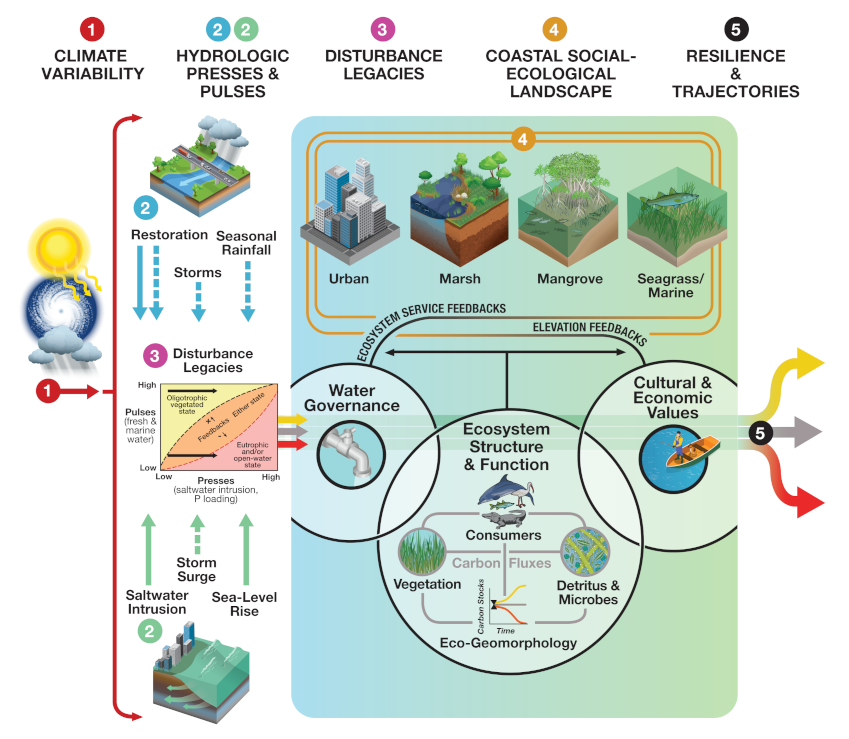
Conceptual Framework & Theoretical Context of FCE V
(1) Changing frequency and intensity of rainfall, temperature, and storms influence (2) hydrologic presses (solid arrows) and pulses (dashed arrows) from fresh (blue) and marine (green) sources that can cause (3) disturbance legacies (e.g., eutrophic and/or open-water state) that influence how (4) social-ecological systems are structured and how they function to influence (5) resilience and ecosystem development trajectories (colored arrows: yellow increasing, gray maintaining, red declining; Kominoski et al., 2018). Human decisions and values about water and dynamic structure and function of natural ecosystems feedback to influence available ecosystem services and maintain soil and sediment elevation feedbacks that determine resilience and trajectories over time. Figure by Hiram Henriquez, Univ. of Miami.
FCE V Research Themes
The following research themes are included in the conceptual framework above and the list of working groups below.
CLIMATE VARIABILITY | |
HYDROLOGIC PRESSES & PULSES | |
DISTURBANCE LEGACIES | |
COASTAL SOCIAL-ECOLOGICAL LANDSCAPE | |
RESILIENCE & TRAJECTORIES |
Working Groups
Working Groups cover one or more of the research themes shown in the conceptual framework and the table above.
Research Theme(s) | Working group |
Climate Variability | |
Hydrologic Resources & Stressors | |
Vegetation | |
Consumers | |
Detritus & Microbes | |
Eco-Geomorphology | |
Social-Ecological Landscape |